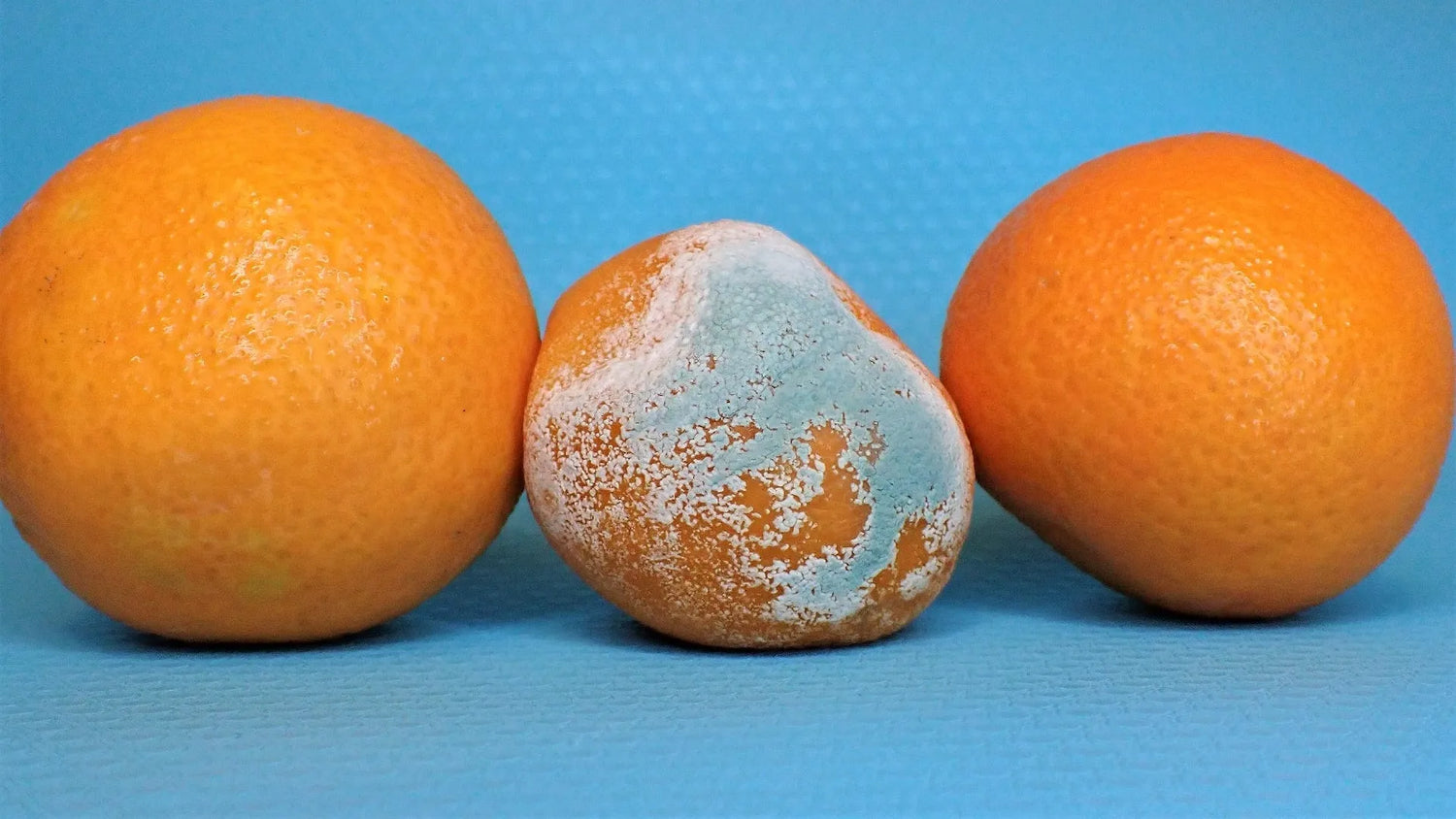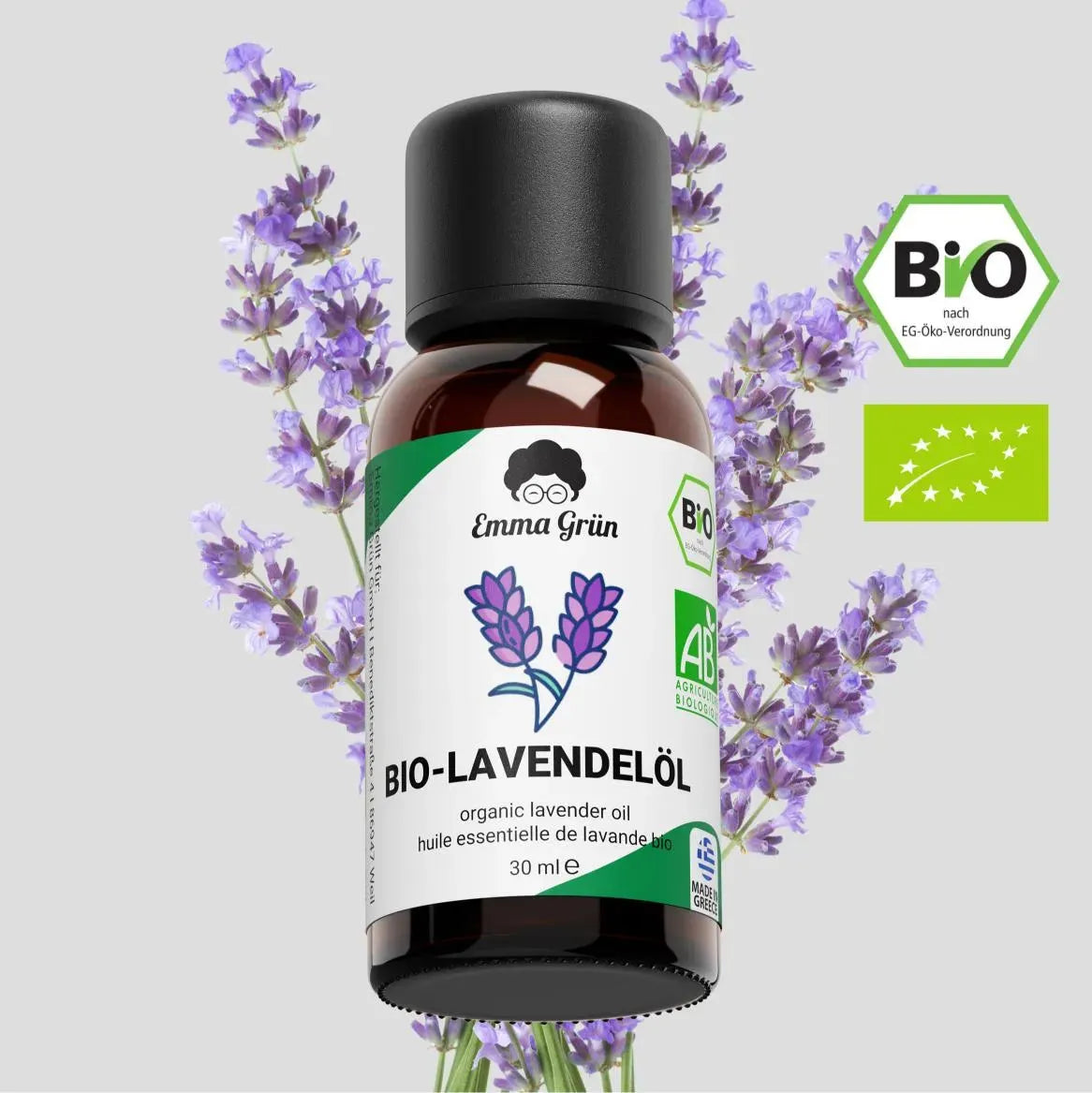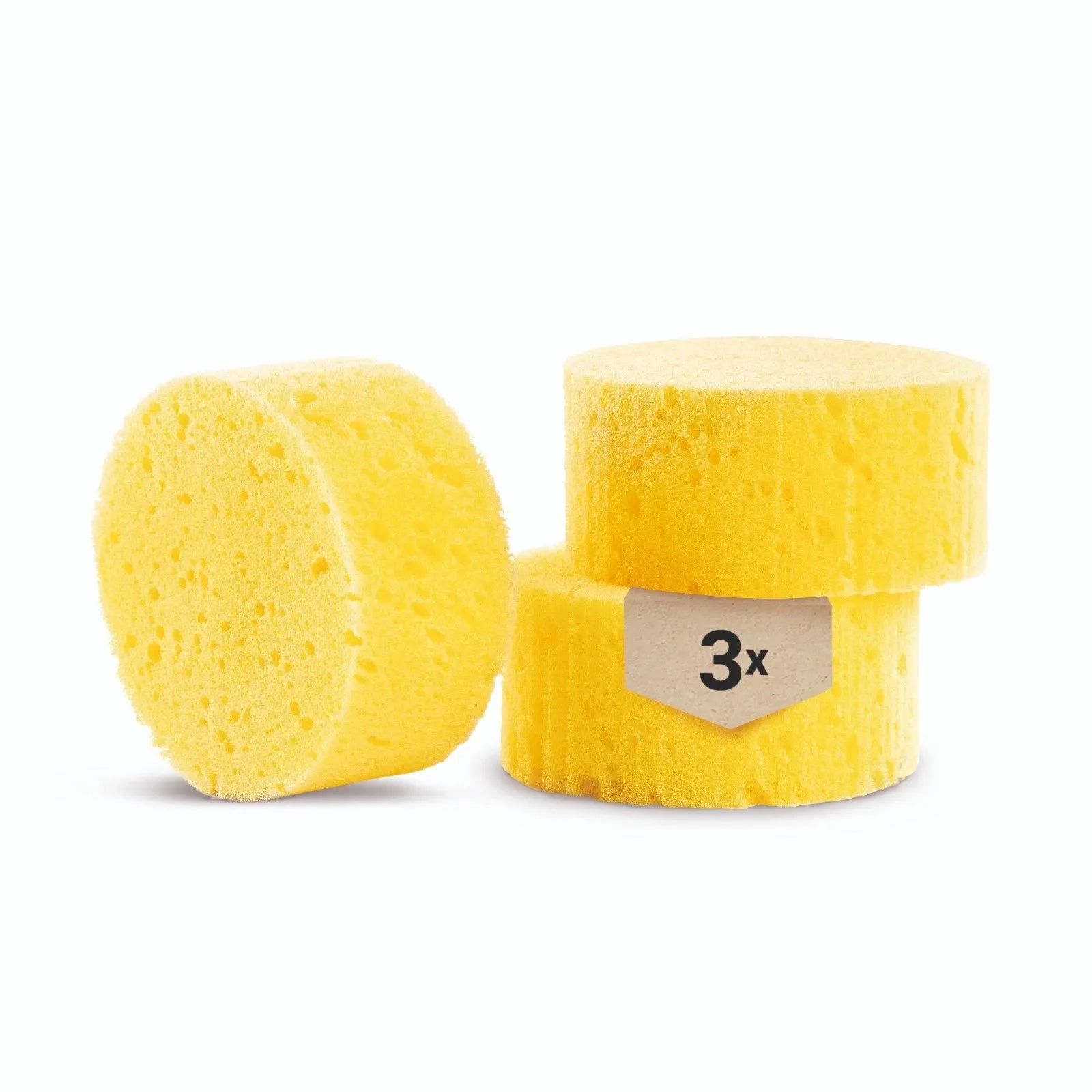Mold in living spaces is a common problem and can not only affect the indoor climate but also endanger your health. The spores of the mold should not be underestimated. That is why it is important to remove mold quickly and thoroughly.
If an infestation is discovered in the early stages, you don't necessarily have to resort to chemical products to remove it. There are a number of home remedies that are inexpensive but still effective. In the following guide, we would like to tell you which remedies will permanently get rid of mold spores and how you can use them to efficiently banish mold from your own four walls.
Home remedies for mold: When are DIY measures enough and when do you need to call in a professional?
When deciding to treat mold spores with home remedies, it is very important to find the cause. If moisture in the walls is the reason for the mold infestation , a superficial cleaning will only provide temporary relief and the mold problem will quickly return .

Image source: Pixabay
The fact is: extensive mold infestation requires a professional assessment . Damage of this extent cannot usually be repaired by simple cleaning and requires comprehensive mold removal by an expert. If you have discovered mold in your house or apartment, the following guidelines must be the focus for successful removal:
- Early detection and prevention: As long as only a small area is covered by mold, successful self-treatment is usually possible.
- Scope of treatment : The degree of mold infestation determines the cost of treatment. Extensive infestation requires intensive measures that should be carried out by a specialist company.
- Safety precautions: When removing mold, protective measures such as wearing a respirator, safety glasses and gloves are essential. In frequently used rooms, aggressive mold-killing agents, especially chlorine-based fungicides, should be avoided as these can pose risks if used improperly.
- Expert help: If the mold infestation exceeds a small area, it is essential to call in experts, especially if the infestation is on walls and ceilings.
- Act promptly: Postponing any control measures until a later date is not an option due to the significant health risks for residents. That is why you must take action against the mold as quickly as possible. In short: There is an urgent need for action !
Not only when having mold treated by a professional, but also when doing DIY measures, you should identify the severity of the infestation as well as the type of mold. Because, as you will read in the following paragraph, not all mold is the same!
What types of mold are there and what causes an infestation?
Each type of mold varies not only in color , but also in the places where they grow and the potential risk they pose to health . Here's an overview of common types of mold, their preferred habitats, and how dangerous they are:
Black mold ( Stachybotrys chartarum )
- Occurrence: Black mold often occurs in damp homes . Rooms that can be particularly affected are bathrooms and basements. But this type of mold also likes to settle behind wall paneling.
- Health risk: Black mold can produce toxins ( mycotoxins ) that are harmful to health, especially with long-term exposure.
Green mold ( Penicillium/Aspergillus )
- Occurrence: Green mold often occurs in food. But green mold also likes to settle on damp walls and in air conditioning and ventilation systems.
- Health risk: Green mold can cause allergies and respiratory problems. Some types can even produce toxic mycotoxins (fungal toxins).
Red mold ( Neurospora )
- Occurrence: Red mold often occurs on damp wallpaper paste, wood and other cellulose-containing materials, as well as on bread and other foods.
- Health risk: Red mold is generally less dangerous than black or green mold. However, in rare cases, red mold can trigger allergies and cause breathing problems.
Yellow mold ( Aspergillus flavus )
- Occurrence: Yellow mold can be found both indoors and outdoors. It grows on materials and food.
- Health risk: Yellow mold is considered one of the more dangerous molds . It is known for producing aflatoxins, which are considered carcinogenic and can even affect the genetic material.
White mold ( various types )
- Occurrence: White mold is often found in basements and attics. It can grow on wood, textiles and other organic materials.
- Health risk: The danger of white mold varies depending on the type. Some are relatively harmless, while others can cause allergies or respiratory irritation.
It is important to note that color alone does not provide a definitive indication of the type of mold or its dangers . To be on the safe side, a professional assessment and, if necessary, a laboratory test are necessary to determine the exact type of mold and the associated risks. Professional assessment and remediation should be considered, particularly in cases of extensive or recurring mold infestation.
But how can a small amount of mold be brought under control again and which household remedies are suitable for this?
Home remedies for mold: Which natural remedies are effective against mold spores?
Mold is not only unsightly, it also poses risks to your health. Home remedies are particularly suitable for small amounts of mold. Before using them, however, you should find out the cause of the mold . If the infestation is extensive or you are unsure, it is advisable to call in a specialist . For smaller, superficial mold spots, however, the following remedies can provide a quick and inexpensive solution:
- Hydrogen peroxide against mold on walls: Has a disinfecting and bleaching effect and is particularly suitable for the treatment of hard, non-porous surfaces.
- Vinegar essence against mold on smooth surfaces: Vinegar essence is the ideal mold fighter on smooth surfaces such as tiles or glass.

Image source: Pixabay
- High-proof alcohol against mold on room walls: Ideal for mold on walls and limescale surfaces where vinegar is not appropriate.
- Dry yeast against mold in the bathroom: Can be used in joints and is particularly useful in combating mold in the bathroom .
If you want to know how to combat mold, then you should stay tuned and don't miss the following step-by-step instructions.
Removing mold from walls and joints: step-by-step instructions
You should be aware of your safety and wear protective equipment, not only when handling chemicals, but also when using household remedies. The following instructions will show you how to remove mold from walls or bathroom joints:
- Step 1: First, choose the appropriate home remedy for the affected surface.
- Step 2: Put on your protective equipment, which should consist of rubber gloves, a breathing mask and safety glasses.
- Step 3: Now apply the respective product to the affected area and let the home remedy work for about 30 minutes.
- Step 4: Now you can carefully work on the mold with a brush and remove it with a damp cloth.
Are you wondering whether you have to throw away all of your cleaning utensils after removing the mold or whether there are other options? You don't have to throw away all of your brushes, rags and sponges straight away. There are other options.
Mold removal: How to properly disinfect cleaning utensils
Disinfecting cleaning tools used to remove mold is an important step to prevent the spread of spores. The following steps will help you properly disinfect your cleaning tools after use:
Step 1: immediate cleaning
Remove coarse dirt and mold residue from the utensils (sponges, brushes, mops, etc.) under running water. To avoid the spread of spores in the home, disinfection should take place outdoors if possible.
Step 2: proper disinfection
Immerse the utensils in a solution of water and a disinfectant. Suitable disinfectants may include household bleach ( sodium hypochlorite ) diluted 1:10 with water or another fungicidal agent .
Ideally, the equipment should be left in the solution for a certain amount of time . Usually 10 minutes is enough to kill most spores.
Step 3: Let cleaning utensils dry
After disinfection, the cleaning utensils should be dried thoroughly. Moisture promotes the growth of mold spores. Therefore, complete drying is essential. These precautions will ensure that your cleaning utensils do not contribute to the spread of mold and are safe and effective the next time they are used.
Important: In cases of severe mold infestation, it is advisable to use disposable cleaning items such as cloths or paper sponges that can be disposed of after use. Use environmentally friendly disinfectants wherever possible and ensure that the products used and the contaminated water are disposed of safely and in accordance with current regulations .
Prevent mold in your home with lavender oil: Here's how
Lavender oil is an essential oil that is often used in natural cleaning products due to its antiseptic and antimicrobial properties . When it comes to fighting mold, it has several advantages that make it a popular home remedy, but with certain limitations. Find out now what positive properties this natural remedy has and when you should seek professional help:
Preventing mold with lavender oil: Advantages and disadvantages in preventing and combating mold spores
As mentioned above, lavender oil has natural antimicrobial properties that can help inhibit the growth of mold and other microorganisms . The essential oil can also neutralize unpleasant odors that often accompany mold infestation, making it a good option as a preventative measure.
As a preventative measure, the oil can also be used in a diffuser to improve the scent of a room and potentially prevent mold growth. However, the essential oil is unable to penetrate deep into porous materials where mold can take root, so it will not have a positive effect on mold growing beneath the surface .
If you have a larger mold problem or if the mold is located in deeper structures in your home, lavender oil is not enough. In such cases, you should resort to professional mold removal products or specialists.
Lavender oil for mold prevention: step-by-step instructions
It is well known that vinegar works against mold. But essential oils such as lavender have also proven to be effective in preventing mold. And the best thing about it: you can easily make the solution yourself. To do this, mix a few drops of natural lavender oil from Emma Grün with water or a neutral cleaning agent and pour the solution into a spray bottle.
For this method to work, you should always choose a natural product. Only sustainable products contain ingredients that are effective against mold spores . Synthetically produced products are only used to mask odors and do not have a reliable effect due to the lack of antimicrobial properties . As the following instructions show you, it is very easy to implement. Here's how to do it:
- Step 1: Spray the affected surfaces with the lavender oil solution and allow the natural remedy to work for some time.
- Step 2: After the treatment, you can wipe the surface with a clean cloth. Make sure that the treated areas are completely dry afterwards. This will prevent mold spores from forming again.
Emma Green Tip: While lavender oil can be useful as a natural mold prevention agent and for minor mold problems, it is not a substitute for thorough cleaning and mold control procedures for a serious infestation. It should be seen as part of a broader mold control strategy that also includes proper room ventilation, moisture control and professional remediation measures when necessary.
Conclusion
Vinegar essence as well as high-proof alcohol, yeast and hydrogen peroxide are effective home remedies for combating mold, as their special properties counteract the formation of mold and can inhibit its spread.
After application and thorough drying of the surfaces, lavender oil can be used as a preventative measure. It has antimicrobial properties that prevent the growth of mold and can neutralize unpleasant odors. The individual household remedies and lavender oil therefore complement each other perfectly to effectively remove mold and, on the other hand, reduce the formation of new mold spores.
For long-term mold prevention, it should be remembered that these methods are usually only helpful in cases of minor mold infestation and do not exclude the need to seek professional help in cases of extensive contamination.
FAQ: Questions & Answers
How effective are home remedies against mold?
Some home remedies can be effective against mild to moderate mold infestations. Vinegar, hydrogen peroxide and alcohol are examples of substances that can kill mold.
Can vinegar remove mold?
Vinegar is a powerful natural product that can kill mold spores due to its acidity. This home remedy can eliminate mold spores on non-porous surfaces and can be used as a preventative measure.
How safe are home remedies to use?
While home remedies are less toxic than some commercial mold control products, protective measures such as gloves, safety glasses and a respirator should still be worn when using them.
Can I also fight black mold with home remedies?
Black mold can be toxic. Fighting it requires special care. If the infestation is severe, it is advisable to call in a specialist.
How do I prevent the mold from coming back?
In addition to regular cleaning and the use of household remedies such as vinegar or lavender oil, it is crucial to find and eliminate the cause of the problem. This is the only way to contain mold in the long term.
Sources
1. Remove mold – https://www.luftreinigerdepot.de/ratgeber/schimmel-entfernen
2. Removing mold: What can you do yourself – https://hausinfo.ch/de/bauen-renovieren/unterhalt-renovation-sanierung/gebaeudeschaeden-schadstoffe/schimmel/entfernung.html
3. Remove mold in the bathroom – https://www.villeroy-boch.ch/de/bad-und-wellness/service/hygieneratgeber/schimmel-im-bad-entfernen.html
4. Mold scare: How to get rid of mold again – https://www.verbraucherzentrale.de/wissen/energie/schimmelschreck-so-werden-sie-den-schimmel-wieder-los-84114
5. Remove and prevent mold – https://utopia.de/ratgeber/schimmel-entfernen-richtig-vorbeugen/




